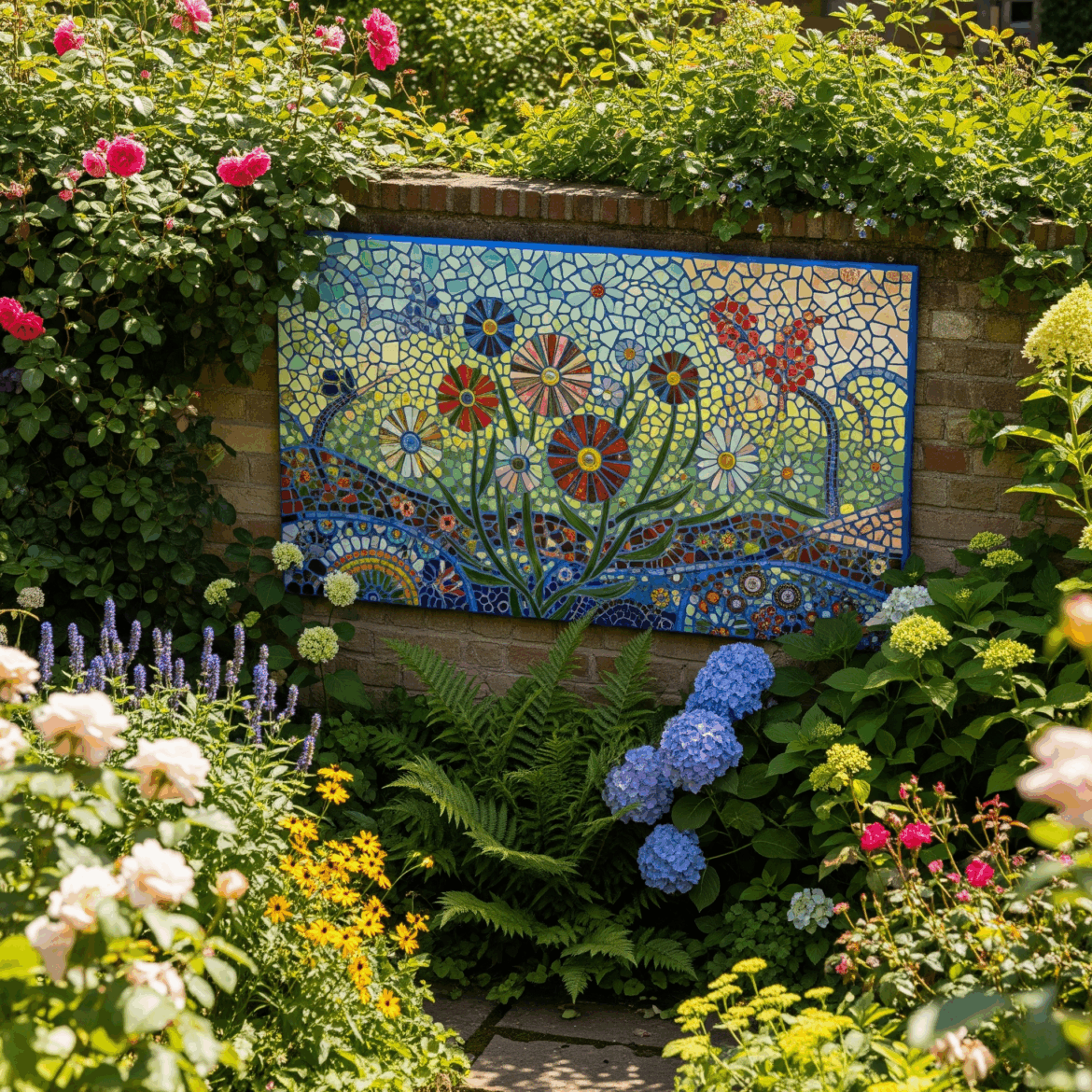For a truly unique touch to any garden or patio space, consider mosaic outdoor wall art. This is a kind of art I enjoy because it uses color, texture and pattern in a way that can make boring walls look interesting.
Mosaic wall art is a creative, personalizable option for your outdoor space that can accommodate any level of skill or style. Mosaics are a great way to showcase your personal style whether you like complicated patterns or simple designs.
Table of Contents
15) Weatherproof ceramic tile mosaics
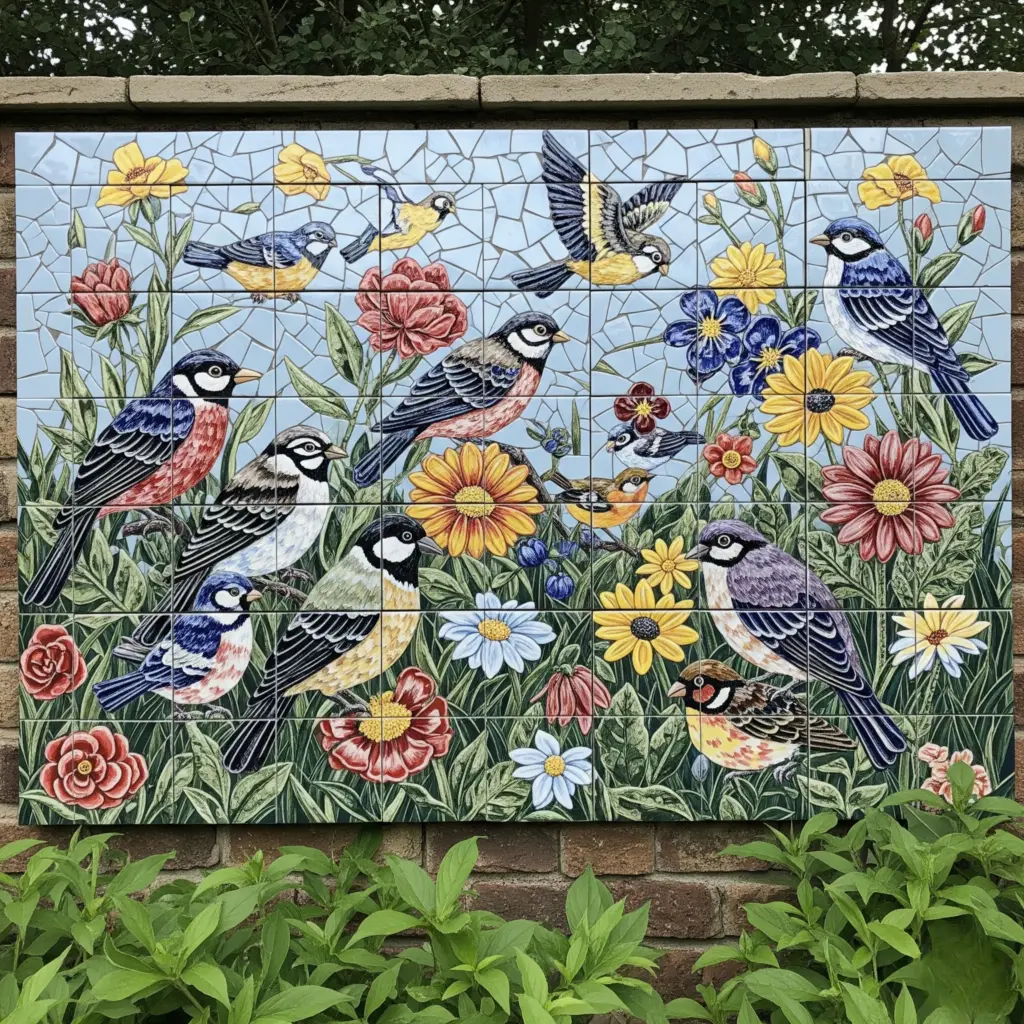
For outdoor walls, I like to use weatherproof ceramic tile mosaics, which are durable and have a neat appearance. The mosaics are impervious to moisture and will not crack or fade in heat or cold. They are an excellent option for outside use.
The tiles should be installed with weatherproof adhesive so they remain secure over the years. I also make sure that grout used is sealed to avoid water infiltration that can damage.
I can make simple and complex patterns with ceramic tile mosaics. I like the colorful and textured range of them, which can be tailored to suit the particular outdoor area.
These mosaics also lend a smooth, polished look that works with both modern and traditional gardens. I think they are perfect for accents on patios, entryways, or garden walls.
14) Modern minimalist tile mosaic patterns
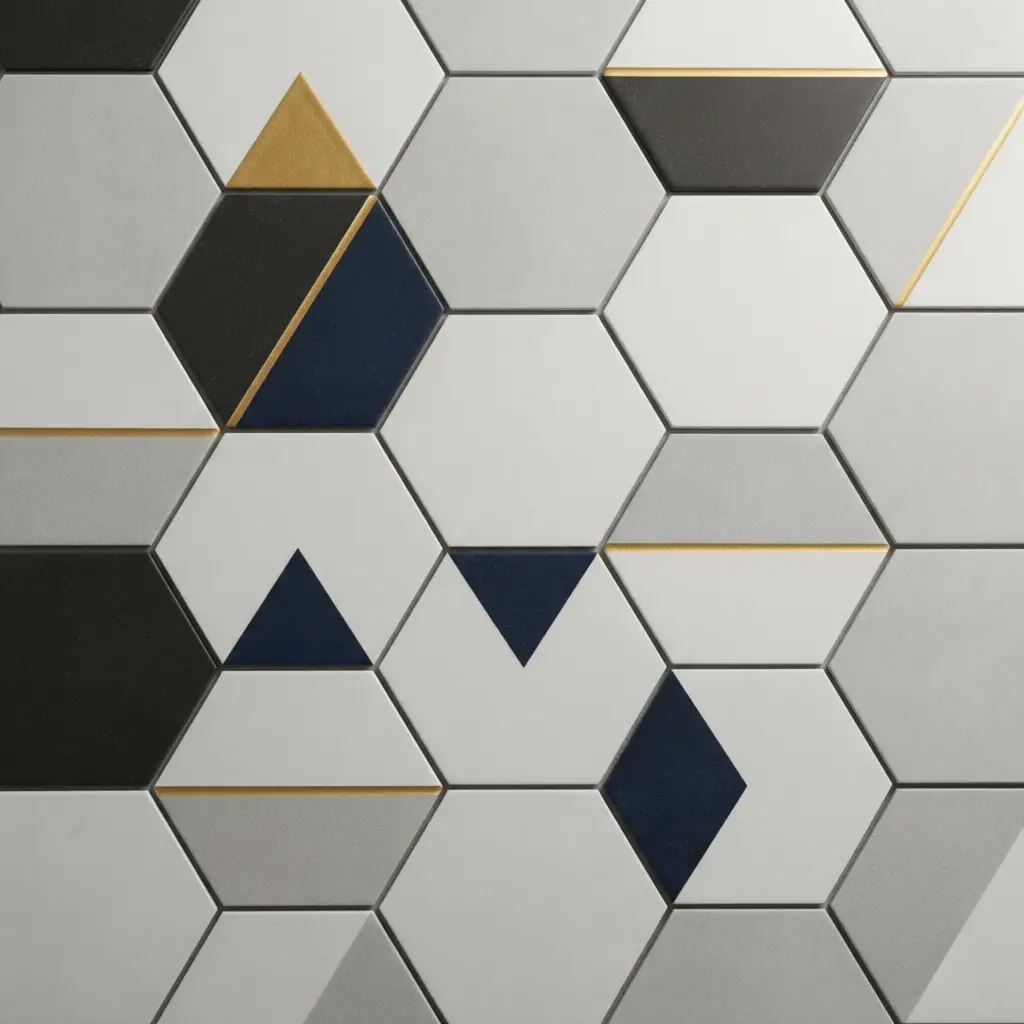
I like the crisp, contemporary look that modern, simple tile mosaics can bring to an exterior wall. Their patterns tend to feature basic geometric forms and a small number of colors. There is an emphasis on space and shape rather than detail.
Neutral colors, such as white, black, gray or earth tones, also help to create a calm, balanced atmosphere. I tend to choose patterns that prosody repetition or slight variation; they add visual interest without being jarring.
Minimalist mosaics are best on large walls, where their simplicity has room to breathe. They also suit contemporary landscaping or architectural styles by emphasizing a clean, minimal look.
I occasionally mix smooth tiles with textured tiles for a bit of depth and still maintain a sense of minimalism. Materials should be selected for their durability and performance outdoors so that they do not degrade and lose crispness.
13) Mediterranean-style mosaic wall panels
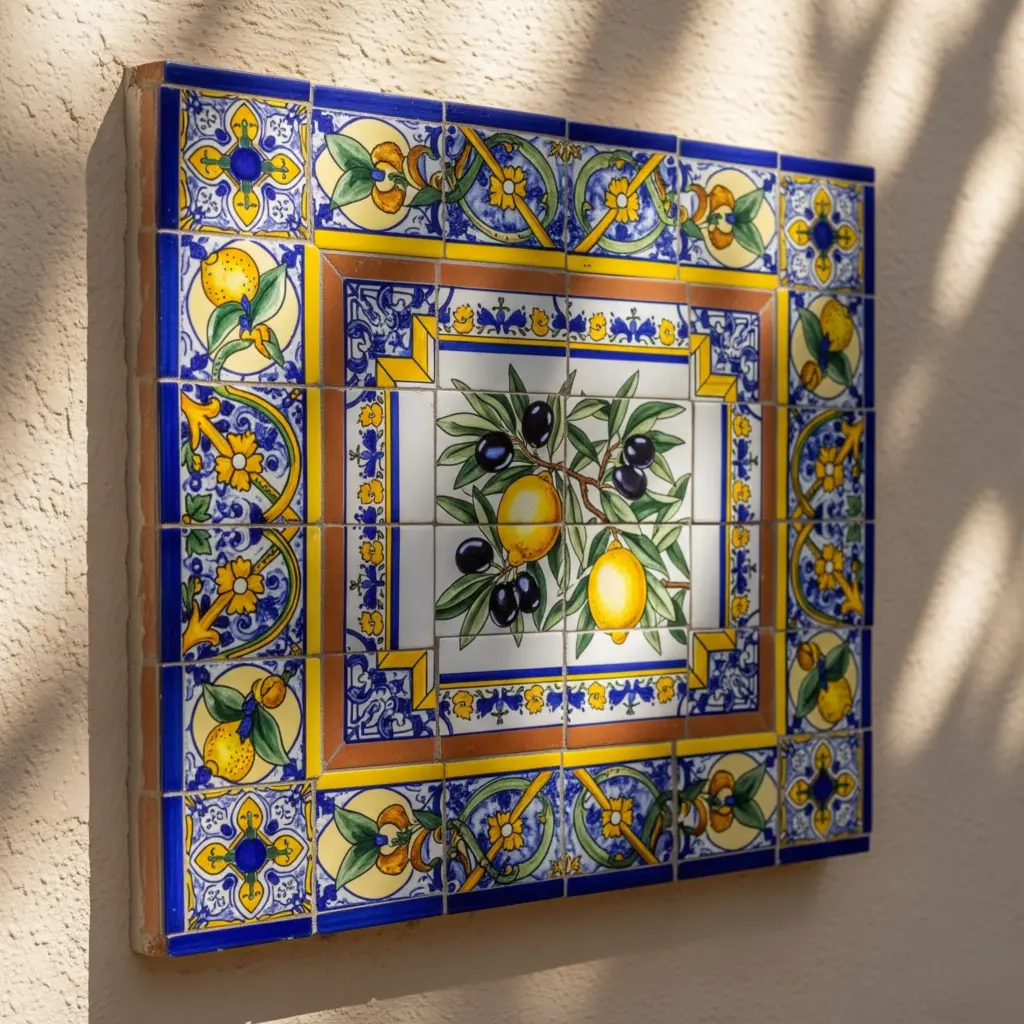
I think mosaic wall panels, Mediterranean style, add an elegant, timeless quality to the outdoors. These panels are often painted in bright hues and with elaborate designs reminiscent of traditional Mediterranean patios. The tiles, made of porcelain or ceramic, are weatherproof and arecovide for use favored surfaces such as garden walls or accents on patios.
Common patterns include geometric shapes, floral designs, or abstract patterns. It provides some visual interest and warmth without being ostentatious. I love how these panels can turn a boring wall into a functional work of art.
Mosaic panels from the Mediterranean can be an easy way to add old-world charm to a contemporary garden. They are low maintenance and do not fade in the sun. These panels are a good-looking and functional solution for anyone seeking both form and function.
12) Whimsical animal silhouette mosaics
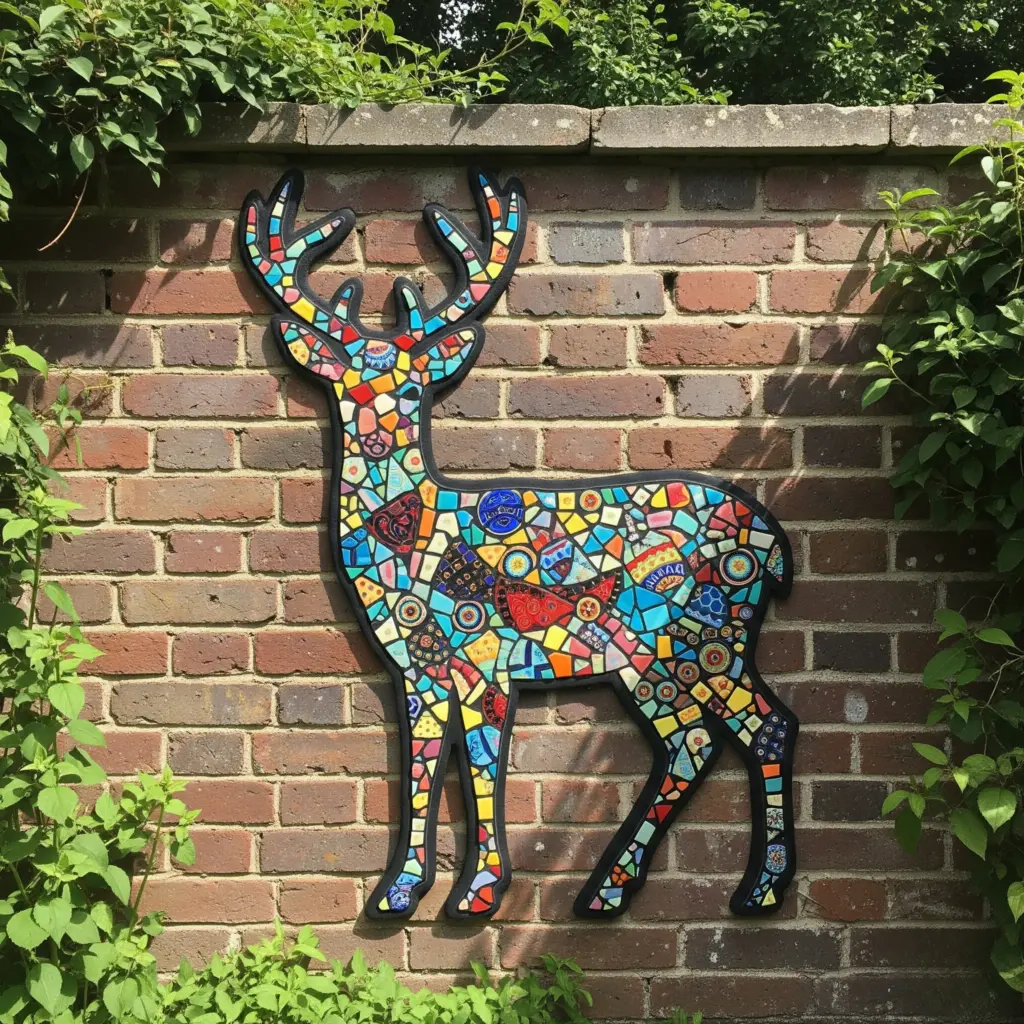
I think it is whimsical to add personality to an outdoor wall with a mosaic of an animal silhouette. The motifs tend toward stylized, straightforward forms of animals such as birds, cats and deer, which are often filled in with colorful tiles or bits of glass.
Working with silhouettes allows the mosaic to pop against garden walls or fences. The dark outlines and the bright interiors are visually arresting but do not overwhelm a room.
I love that these mosaics can work for either a playful or sophisticated garden. You can go bright or muted depending on your aesthetic.
Animal mosaics are whimsical, too. They can be tailored to your favorite animals, or local wildlife. It gives your own outdoor space a sense of being individual and welcoming.
It seems to me you can put these mosaics on just about any surface, whether brick, wood or stone. They’re durable, easy to maintain, and provide lasting decorative elements to any garden or patio wall.
11) Reflective glass mosaic accents
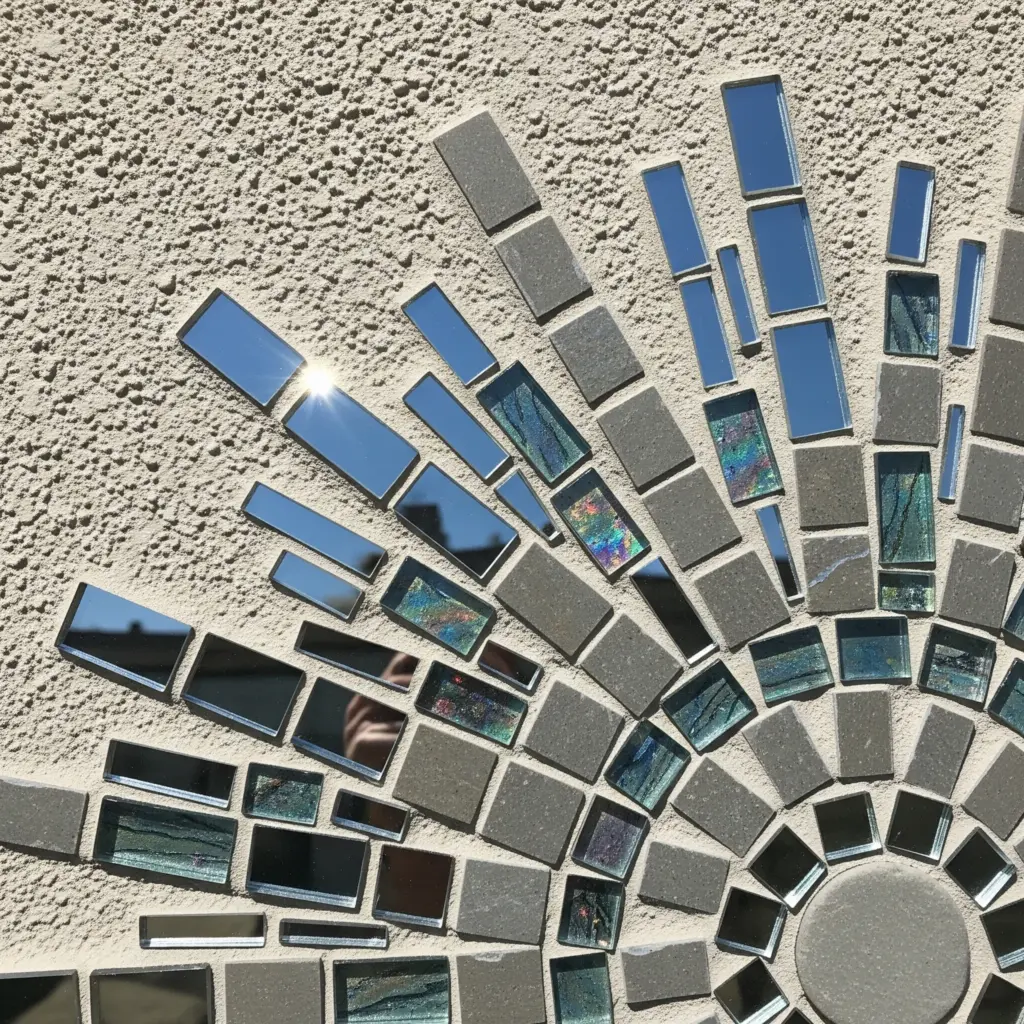
I like to use bits of reflective glass mosaic to add a little twinkle to an outdoor wall. Small shards of mirror or other reflective glass are used to create spots of light that will reflect sunlight and create soft glints. This effect can make an outdoor space feel more open, without being overpowering to the design.
When I work with these materials, I always glue them down. This guarantees safety and durability, especially as outdoor surfaces are subjected to changes in weather. When installed properly, the pieces do not come loose.
Mosaic tile in reflective finishes is nice mixed with colored tile or natural stone. They are a nice contrast that complements the design. I have employed themes such as sunbursts or abstract forms to introduce points of focus that draw the eye gently.
Borders and certain forms can be enhanced with reflective elements. It’s a nice way to create some light and depth without supplemental lighting. I suggest playing around with sizes of glass to achieve different reflections and textures.
10) Rustic stone and tile mosaic combo
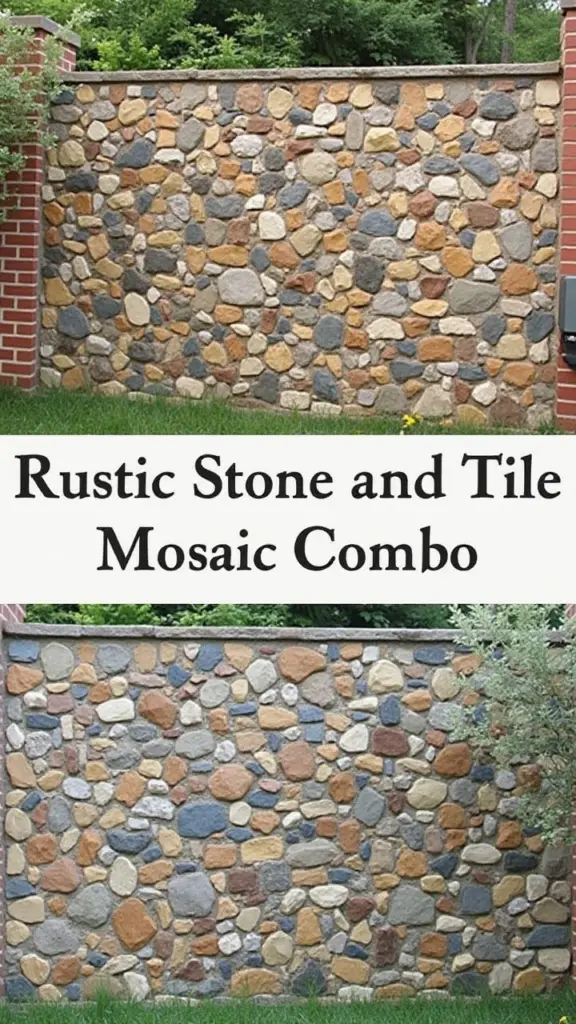
I like the contrast a rough stone can provide with bright colored tiles in a textured mosaic wall. The tiles are complemented by the organic quality of the stones. This combination is great for outdoor walls that need a little bit of rough and tumble artistry.
I have found that stones in various shapes create dimension and interest. I insert tiles to form small patterns or images within the stone field. The effect is a more artisanal, organic wall.
The combination of durable stone and tile makes the mosaic appropriate for outdoor conditions. I also like the contrast of natural stone colors and bright tile colors, in a way that can be both understated and dramatic. It works with contemporary and country gardens alike.
9) Bold black and white tile mosaic
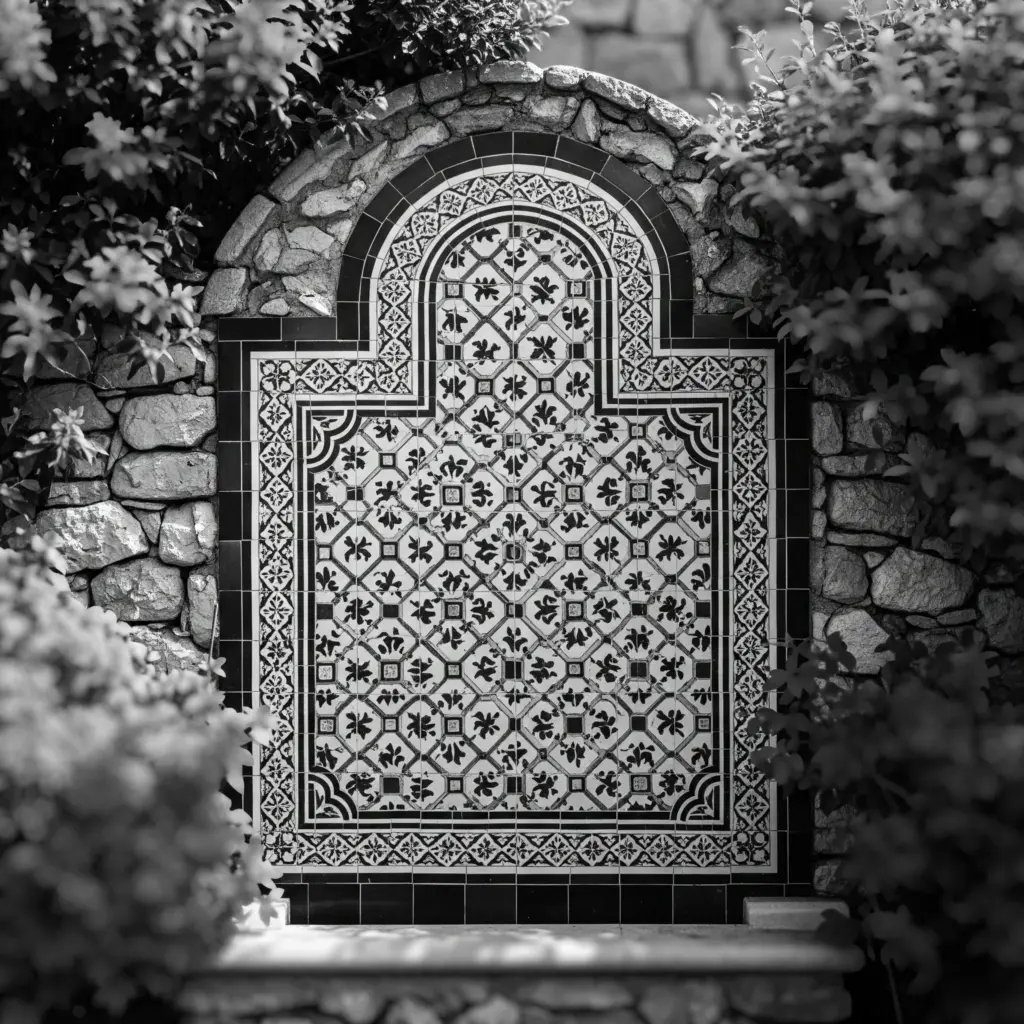
I like black and white patterned tile mosaics for outdoor walls; they have a classic quality. The pairing of these two colors have a dramatic effect that works in many types of applications.
Black and white geometric shapes or floral patterns also introduce formality. These mosaics can be the centerpiece without being too busy for the surrounding area.
Black and white mosaics are also a nice complement to natural materials. They offset greenery or stone nicely, adding a feeling of curation and intentionality to the outdoor space.
They can be made from limestone or marble, or from ceramic tiles, each offering a different texture and finish. And I like that they are durable outdoors, which is also important for durability.
A black and white mosaic wall can make an ordinary outdoor room look elegant but easy to put together. It’s a good option for those who want some artiness with very little color.
8) Intricate floral mosaic designs for walls
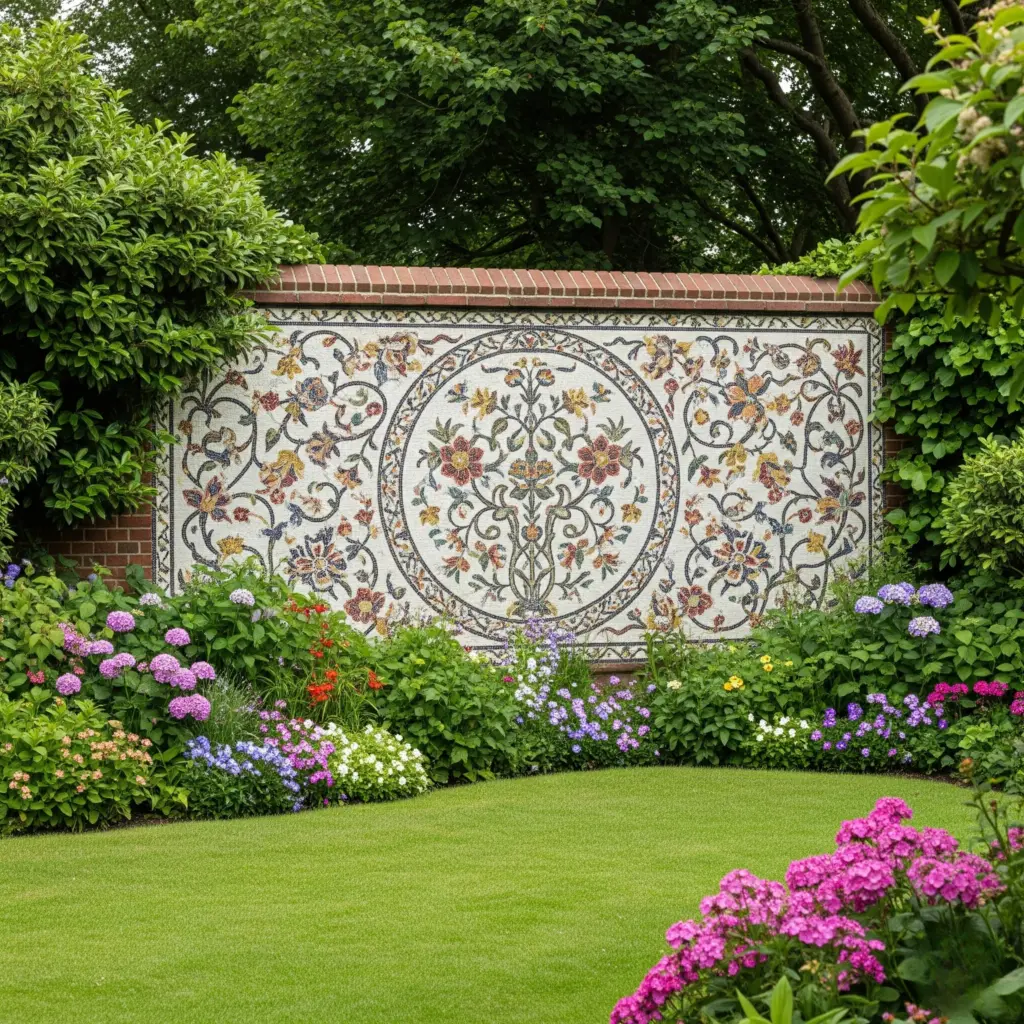
Outdoor walls covered with elaborate floral mosaics are another decorative favorite of mine. They all have an organic, refined quality, and a fine level of detail, that works in harmony with garden settings.
The small and precise nature of the tiles facilitates the production of realistic petals, leaves, and stems. This kind of detail makes the mosaic feel organic as well as artistic.
Floral mosaics are stylistically versatile. I can use bold, bright colors for a strong effect or muted colors for a quiet, sophisticated look.
These patterns are also suited to varying sizes of walls. A whole wall can be given over to a garden tableau, while tight quarters call for a single bloom or a bunch.
Mosaic art in the form of flowers provides some interest and personality without competing with the garden itself. It is a focal point that merges art and nature.
7) Mosaic bird mosaic with vibrant stones
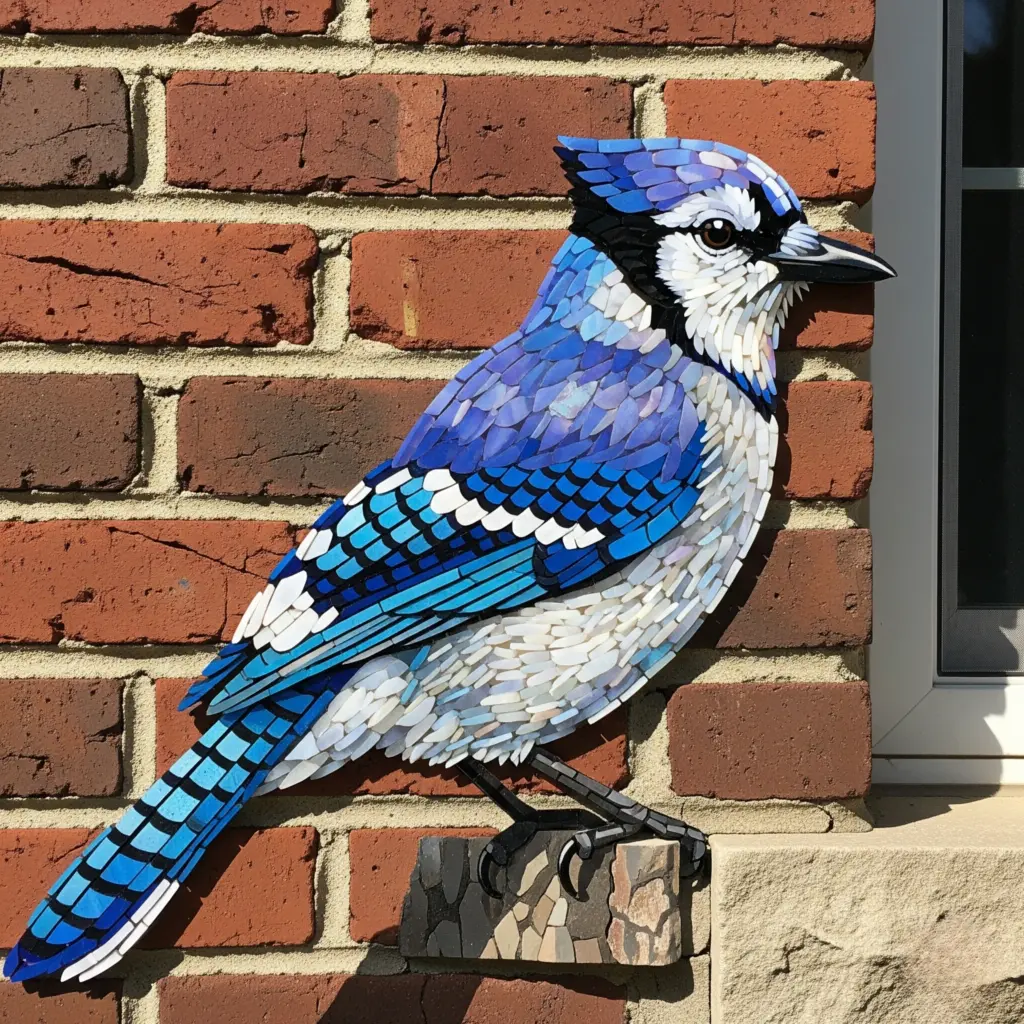
Mosaic birds set in colorful stones are a good way to enliven an exterior wall. The different colors of the stones enable naturalistic representations of feathers and designs that are both realistic and artistic.
The use of stones also adds texture to the piece and depth that flat materials lack. This makes the mosaic both a visual as well as physical object.
From my experience, using outdoor safe grout is important not only for durability of the mosaic but also for maintaining bright colors. This guarantees that the piece will be a permanent addition to any garden or patio wall.
I also like to work with birds that are appropriate to the local environment, which grounds the art in its place. Brighter pieces can also be used, since the natural colors of the stones can work to accentuate the birds’ characteristics in an imaginative way.
In general, the bright stone bird mosaic makes an equally good combination of art and nature as outdoor wall decoration.
6) Colorful broken china mosaic collage
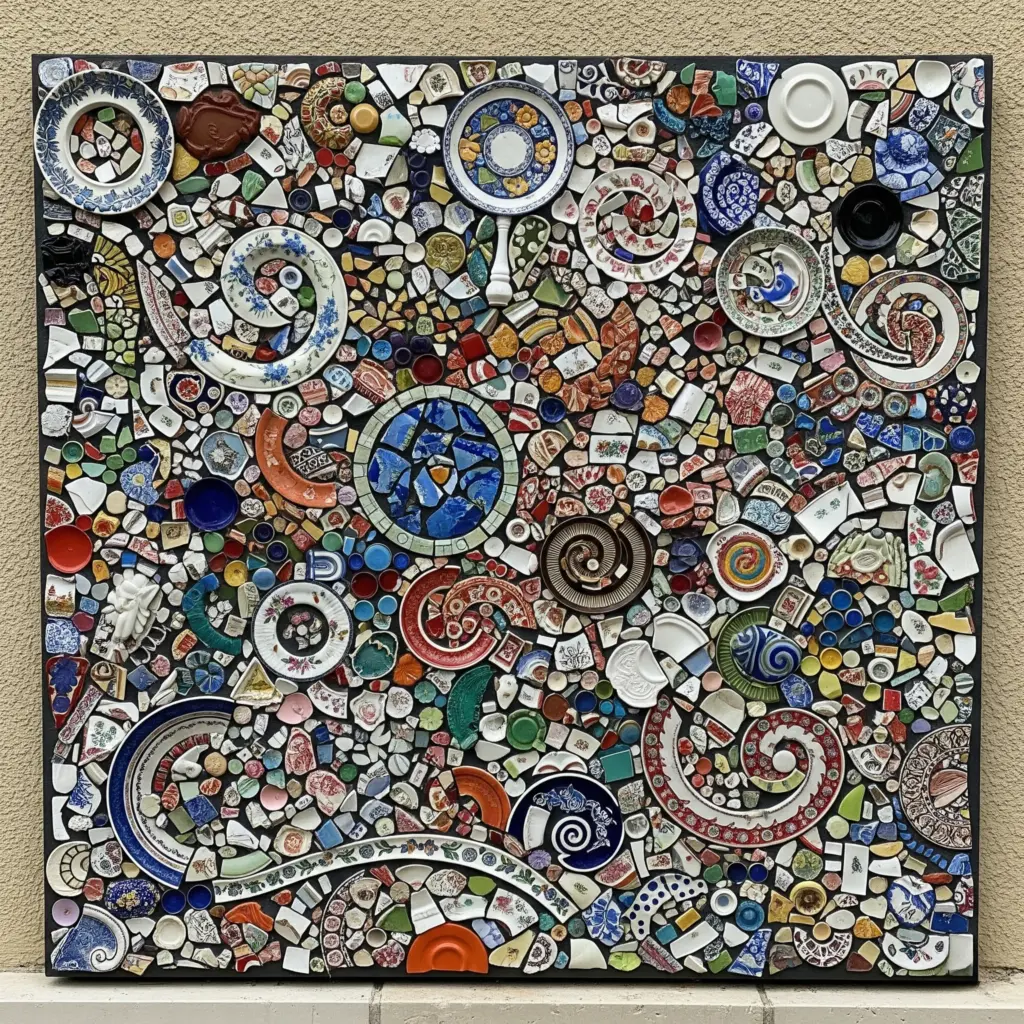
I think broken china mosaics are a delightful way to add color and texture to an outdoor wall. Working with broken china enables me to produce details or random designs that are visually stimulating.
The china shards run the gamut in color and shape. This approach allows me to transform broken or unused plates into a more artistic form.
I begin to lay the pieces down on a firm backing until I feel the composition is balanced. Then I attach each piece with outdoor glue and use grout to fill in the gaps between pieces.
The end product is an effective piece of weatherproof wall art that is creative and resourceful. This technique adds a personalized artisan quality to an outdoor space without the use of typical tile.
5) Nature-inspired leaf and vine mosaic
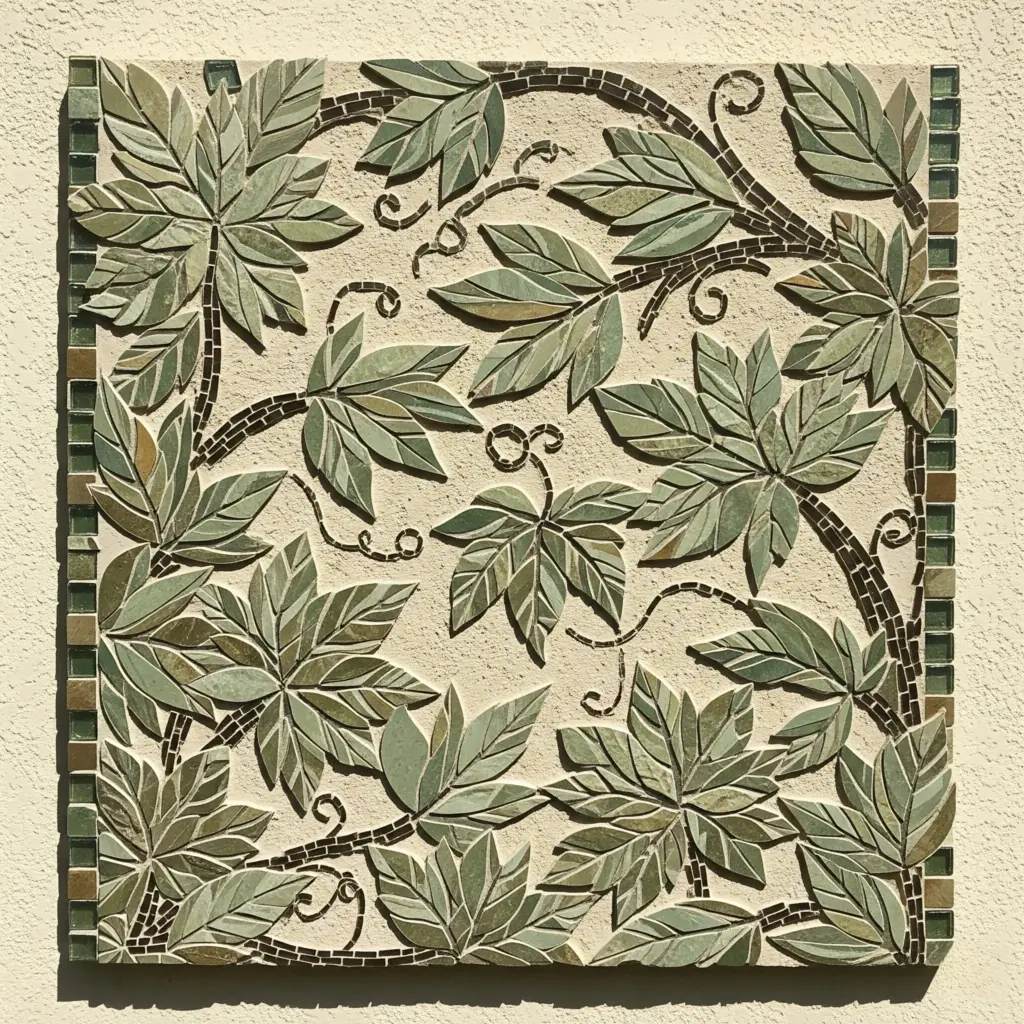
For outdoor wall art, I think nature-themed mosaics are particularly successful. The leaf and vine patterns lend a soothing botanical feeling. They work nicely in a garden, and they are quietly handsome on a wall.
The greens are also differentiated with curvy lines to evoke the look of twisting vines. Gold or brown touches can be used to highlight branches or veins. The effect is elegant and understated, providing a bit of texture without being overbearing.
For these mosaics, I often recommend using natural materials like stone, glass, or ceramic tiles. They provide a sense of touch that matches the subject. And the materials can affect its relationship with light over the course of a day.
Mosaics of leaves and vines bring the outdoors in. It enlivens a garden wall by translating nature into art. It works for simple or elaborate designs, as you wish.
4) Sea-themed mosaic mural with glass pieces
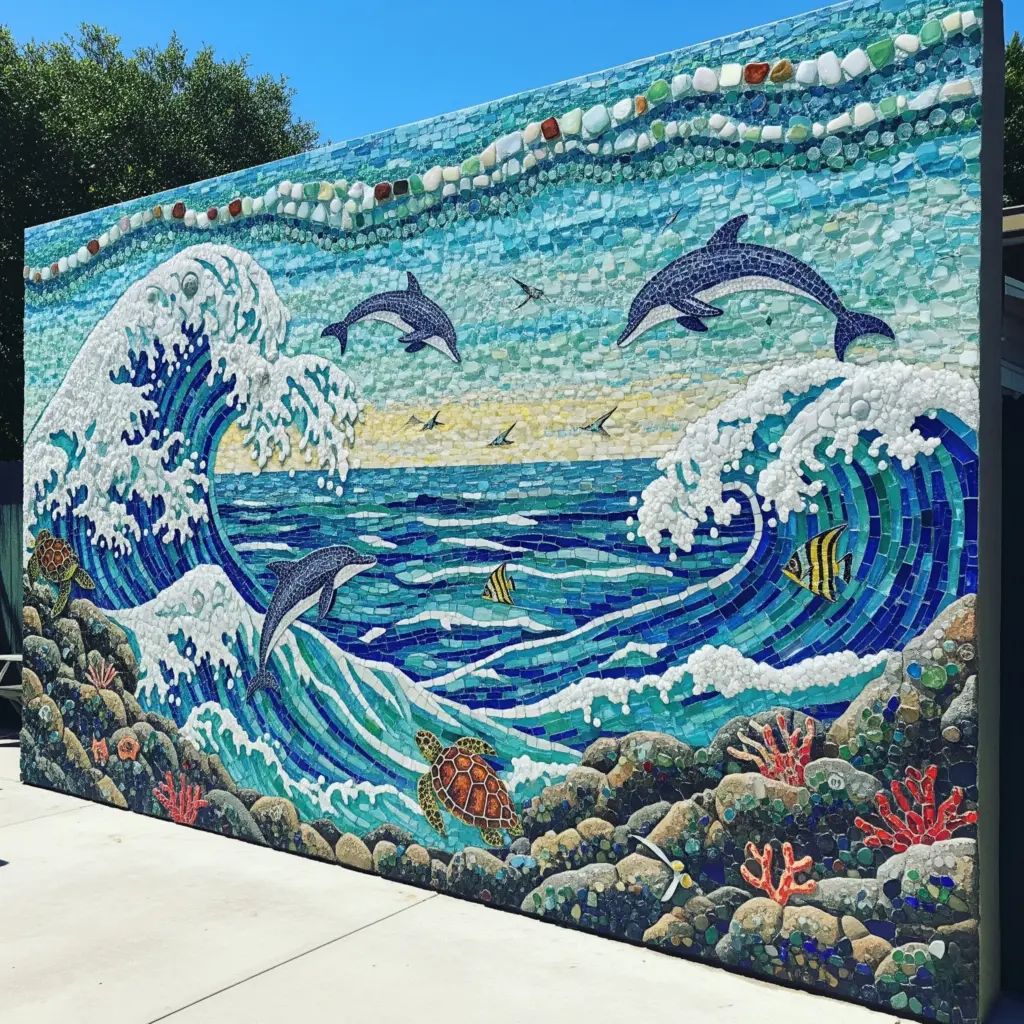
Mosaic murals with glass pieces in sea themes, I think, can be very refreshing and organic on an outdoor wall. I can also make waves, sea creatures or abstract images of the ocean, all out of sea glass or colored glass tiles, which will reflect some light and provide whispers of color.
The glass shards catch and refract sunlight, creating an active and ever changing composition over the course of the day. They are a good counterpoint to rough surfaces such as stone or brick and can provide a nice tactile component to the mural.
In my mural projects, I will often mix the sea glass with mosaic tiles or pebbles to create depth and variety. It gives me a combination of details, like the glint of light on the water or the texture of shells.
I suggest picking one that fits your outdoor space. Coastal or nautical themes belong naturally in garden spaces, patios or pool areas. These murals are a fusion of art and the tranquil beauty of the sea, and enhance any outdoor space.
3) Abstract geometric tile mosaic panels
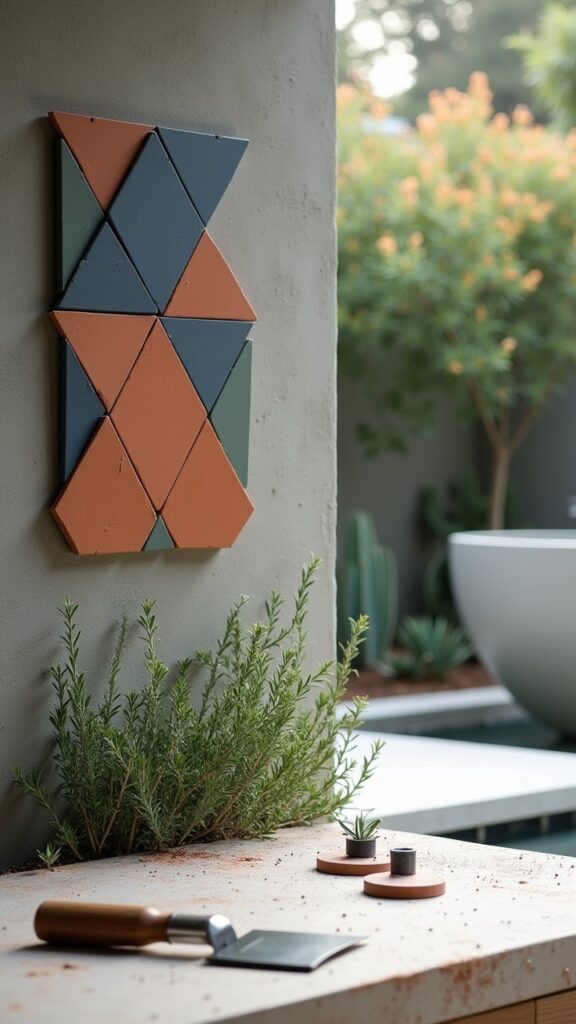
For outdoor wall art, I love abstract geometric tile mosaics. Most of the designs have a crisp, sometimes even vivid, formality about them. These are nice on patios or garden walls, or just as art.
The panels are highly customizable. I can play with different shapes of tiles, too, whether they are triangles or squares or hexagons, and mix colors to convey a certain mood or tie in with nearby decor. The patterns can be simple or complex depending on the space and my taste.
The abstract geometric mosaics can be aesthetically attractive, but not too busy, as they often explore concepts of symmetry and repetition. And tiles tend to weather well, making them good for outdoor use, too.
These panels, when properly installed, provide a modern aesthetic that can unify the landscape. I have watched them turn blank walls into compelling visual features, creating interest and character in outdoor areas.
2) Butterfly pattern mosaic for garden walls
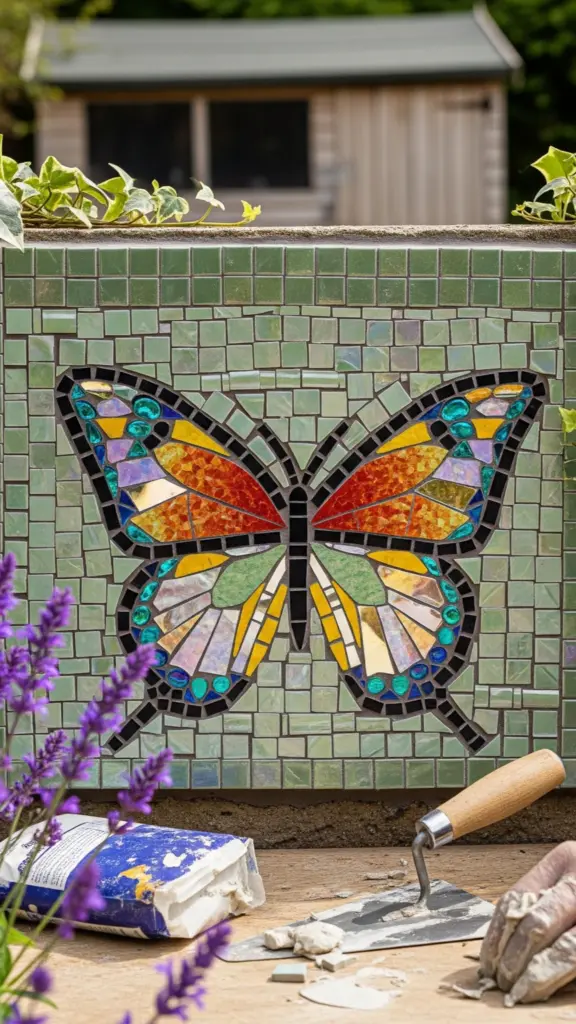
I love butterfly patterns, and use them often in my garden walls. The organic shape of the butterfly is perfect for colorful tile or glass pieces. The effect is a bit of interest and movement without being busy or taking over a room.
Mirrored materials, such as tiles or shards of broken mirror, also work well to reflect sunlight and add liveliness. I frequently select colors that harmonize with the plants growing in the area so that the wall art and the garden feel more integrated. The shapes can be realistic butterflies or more abstract or geometric designs.
The mosaics have to be made from weather resistant products, since they are made on exterior walls. I like to use outdoor-grade grout and tiles that can withstand moisture and temperature fluctuations. It ensures that the mosaic will remain whole and vibrant for years.
Butterfly mosaics can be attached to freestanding walls, or fences or garden sheds. They infuse character and pay homage to the natural world, which is why these garden wall decor items have stood the test of time.
1) Mirror chips and sunburst mosaic wall art
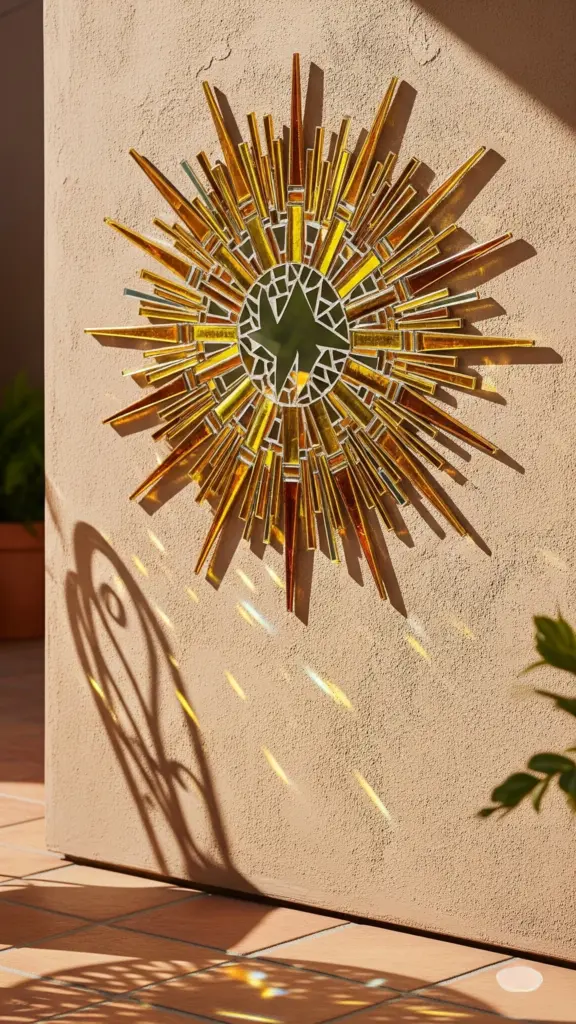
Sunburst mosaics made with bits of mirror are another bold option for patio decor. It usually has a circular, outward pattern similar to the rays of the sun. The use of mirror shards adds reflective surfaces to play withikght and adds visual interest.
This type of wall decor is great for patios, gardens, or any outside area that could use a burst of color. The colorful mosaic tiles and mirrored surfaces help the piece pop during the daytime, particularly when there is natural sunlight.
Sunburst mosaics made or selected with shards of mirror can be done in a variety of styles, from spare and understated to busy and dramatic. I like the combination of longevity and creativity in this medium; it is practical for the elements and brings character to my home.
Essential Materials And Tools
Choosing materials and tools is also important in making a more permanent mosaic wall. Each component, including tiles and adhesives, is intended for outdoor use and is durable and aesthetic. Common issues such as fading, cracking, or peeling can be avoided with proper product selection and preparation.
Choosing Durable Mosaic Tiles
I always try to use tiles meant for outdoors. Outdoor porcelain, ceramic, and glass tiles are made to withstand moisture, thermal shock, and UV damage, unlike indoor versions.
I like the variety of color and texture natural stone tiles can offer, but I check their porosity. Stones that are high in absorption can also deteriorate if they are not properly sealed. Do not use smooth-backed tiles; rough or mesh-backed tiles will adhere better.
I choose my tiles according to their use of permanent pigments, because these tiles are more durable in the sun and do not fade as quickly. Lastly, size and thickness also matter, thicker tiles tend to last longer and break less in outdoor environments.
Outdoor Adhesives And Grouts
There has to be a strong bond, because tiles must remain attached through the weather. I use polymer modified thinset mortar, which has superior adhesion and flexibility for outdoor mosaics.
For grout, I choose sanded epoxy or cement-based grout rated for exterior use. These types are more resistant to water, freeze-thaw cycles and cracking than standard grout. Epoxy grout is also stain and mold resistant.
Application and mixing are important. I follow directions from manufacturers religiously to achieve maximum strength. Air pockets that may cause a tile to loosen are avoided by applying adhesive evenly and by pushing down on tiles in place.
Weatherproofing Techniques
Keeping your mosaic sheltered from rain, sun, and temperature fluctuations will prolong its life. I finish and grout with a premium, penetrating outdoor sealer that prevents moisture penetration and frost damage.
Sealing also helps keep the colors bright and reduces algae or mold growth. I apply the sealer according to product directions, which is usually after the grout is cured, and reapply every 1-2 years depending on exposure.
Wherever possible, I try to locate the mosaics in semi-sheltered spaces or to provide some sort of protection, such as an overhang. Good drainage behind the wall surface will prevent the accumulation of water and reduce the risk of damage.
Techniques For Stunning Mosaic Outdoor Wall Art
Planning, color use, and installation are important when designing and installing mosaic outdoor wall art, particularly large designs. I also concentrate on careful planning, harmonious material combinations and secure mounting for beauty as well as durability.
Planning Patterns And Layouts
I will sketch the design before beginning to get a sense of the overall pattern and flow. Working on grid paper allows me to design exact tile patterns and sizes.
I take into consideration the contour and texture of the wall and how the piece will accommodate to the corner or other irregularities. Repetition of motifs or symmetry can create a sense of unity.
Complex designs can be divided into sections so that the construction is not overwhelming. I also sample small amounts to make sure colors and shapes work well together before full installation.
Mixing Colors And Textures
I select color palettes that harmonize with the natural landscape but are also artistically divergent. For added interest, combine matte and glossy tiles, and play with scale.
The use of materials such as glass, ceramic, and stone provides variation. I use neutral colors to temper the bold patterns so that the eye is not overwhelmed.
Worn together, the garments catch the light in different ways and can look slightly different throughout the day. It also provides a vibrancy to my mosaics.
Installing Large-Scale Wall Designs
For large mosaic walls I prep the surface by first cleaning it and then applying a water resistant primer. This protects from moisture damage and enhances adhesion.
I use a strong outdoor adhesive. I work with tiles in small sections, and I grout only after finishing a section to ensure precision.
Heavy or complex pieces should be mounted on a support structure, such as a mesh backing or cement boards. Sealing the mosaic after installation helps weatherproof the installation and increases its longevity.

